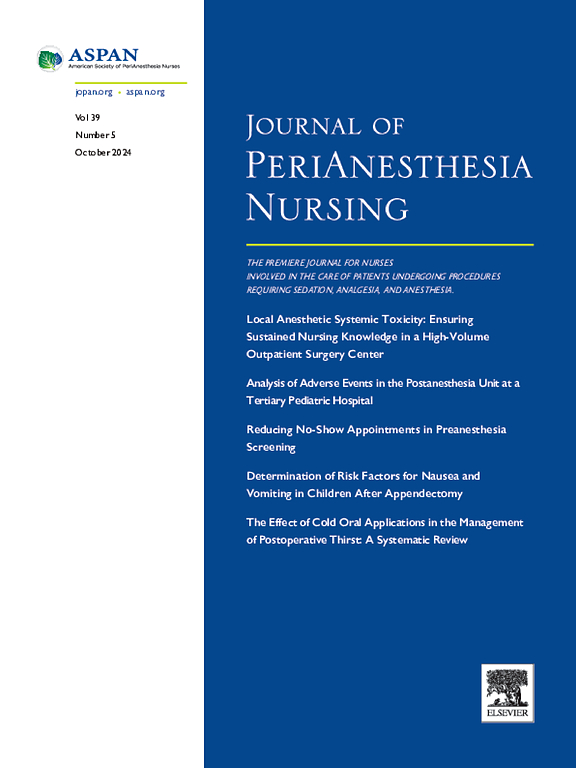Experience of Student Nurse Anesthetists’ Learning in the Operating Room During the COVID-19 Pandemic: A Qualitative Interview Study
IF 1.6
4区 医学
Q2 NURSING
引用次数: 0
Abstract
Purpose
This study explores student nurse anesthetists’ (SNAs) learning in the operating room during the coronavirus 2019 pandemic.
Design
An explorative design with semistructured interviews was used.
Methods
Thirteen former SNAs and 12 clinical supervisors (8 of whom were included in the final analysis) were recruited from 6 counties in Sweden. Participants were purposively recruited. Inclusion criterion for former SNAs was having completed the nurse anesthesia program in the fall of 2020 to spring 2022; and for nurse anesthetists, those who have experience in supervising SNAs. The interviews were analyzed with thematic analysis.
Findings
The analysis identified one theme and five subthemes. The theme was that student learning was in focus despite an ongoing pandemic. Every learning situation contributed, and learning was triggered by the challenges. Both the SNAs and the supervisors exhibited resilience by accepting the situation and striving to do their absolute best in a nonoptimal learning environment. Over time, learning and supervision returned to normal.
Conclusions
During the pandemic, learning was ongoing despite stress, fear, and other challenging factors. Students’ learning appears to have been prioritized. The study highlights that nurse anesthetists and SNAs were resilient, resourceful, and able to find new ways to keep learning going.
COVID-19 大流行期间麻醉师学生在手术室的学习经历:定性访谈研究。
目的:本研究探讨了2019年冠状病毒大流行期间麻醉师学生在手术室的学习情况:采用半结构式访谈的探索性设计:从瑞典 6 个县招募了 13 名前 SNA 和 12 名临床督导(其中 8 名被纳入最终分析)。参与者是有目的性地招募的。前 SNA 的纳入标准是在 2020 年秋季至 2022 年春季完成麻醉护士课程;麻醉护士的纳入标准是具有监督 SNA 的经验。对访谈内容进行了主题分析:分析确定了一个主题和五个次主题。主题是,尽管大流行病仍在持续,但学生的学习仍是重点。每种学习情况都有所贡献,学习是由挑战引发的。SNA 和督导都表现出了坚韧不拔的精神,他们接受了这种情况,并努力在不理想的学习环境中做到最好。随着时间的推移,学习和监督恢复了正常:在大流行病期间,尽管存在压力、恐惧和其他挑战性因素,学习仍在继续。学生的学习似乎得到了优先考虑。这项研究突出表明,麻醉师和 SNAs 护士坚韧不拔、足智多谋,能够找到新的方法来继续学习。
本文章由计算机程序翻译,如有差异,请以英文原文为准。
求助全文
约1分钟内获得全文
求助全文
来源期刊

Journal of Perianesthesia Nursing
NURSING-
CiteScore
2.20
自引率
17.60%
发文量
279
审稿时长
90 days
期刊介绍:
The Journal of PeriAnesthesia Nursing provides original, peer-reviewed research for a primary audience that includes nurses in perianesthesia settings, including ambulatory surgery, preadmission testing, postanesthesia care (Phases I and II), extended observation, and pain management. The Journal provides a forum for sharing professional knowledge and experience relating to management, ethics, legislation, research, and other aspects of perianesthesia nursing.
 求助内容:
求助内容: 应助结果提醒方式:
应助结果提醒方式:


